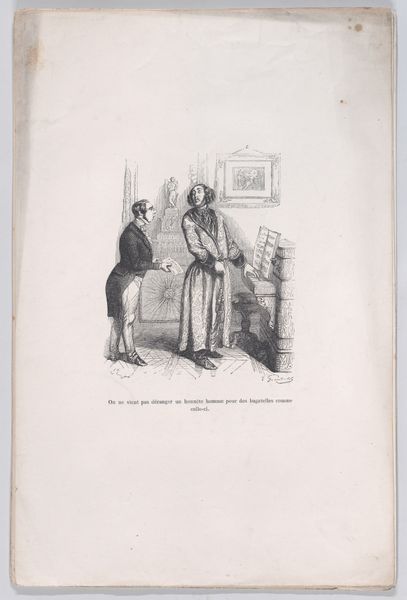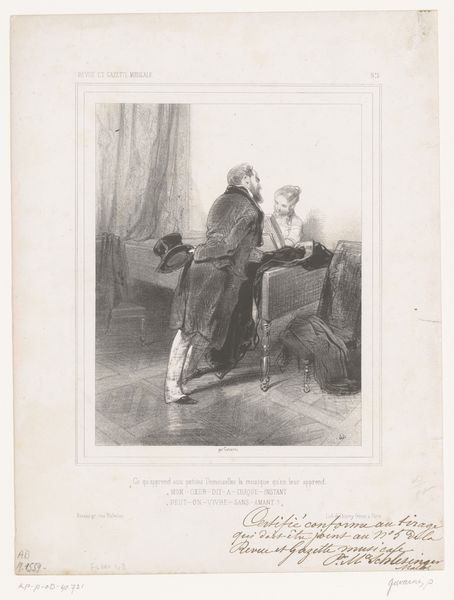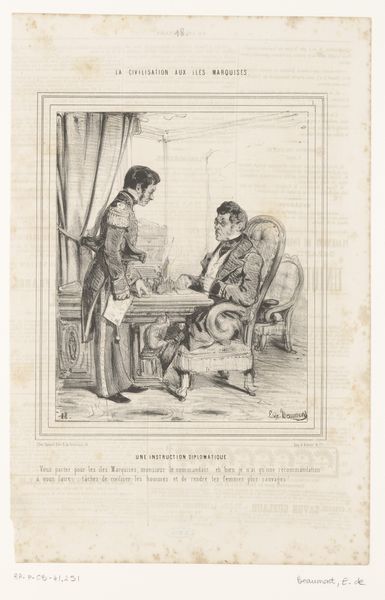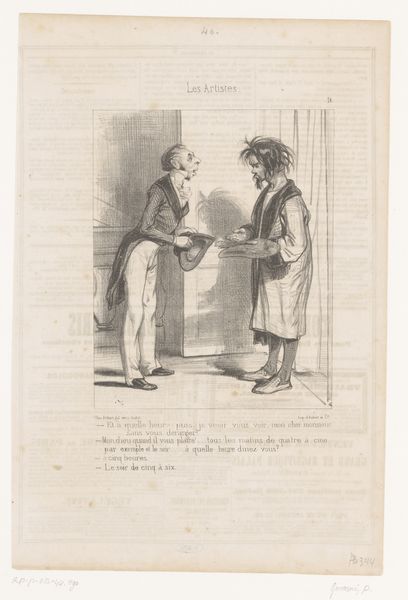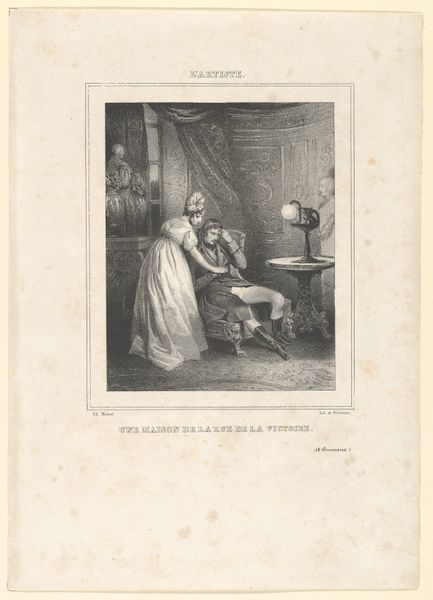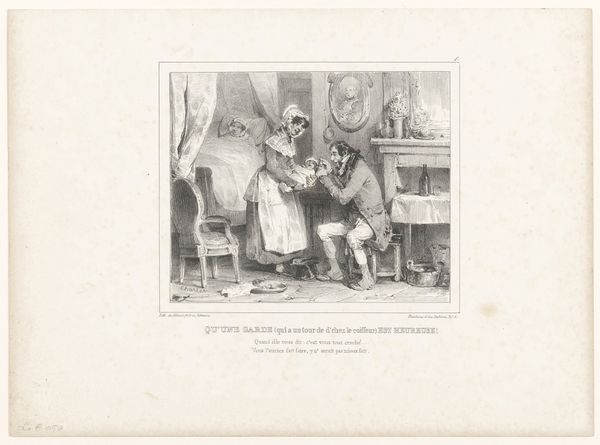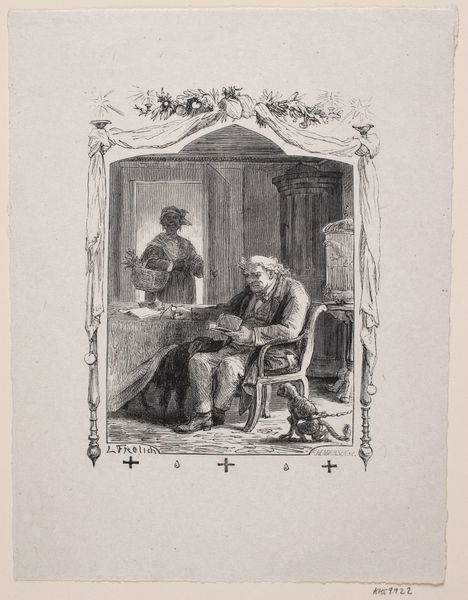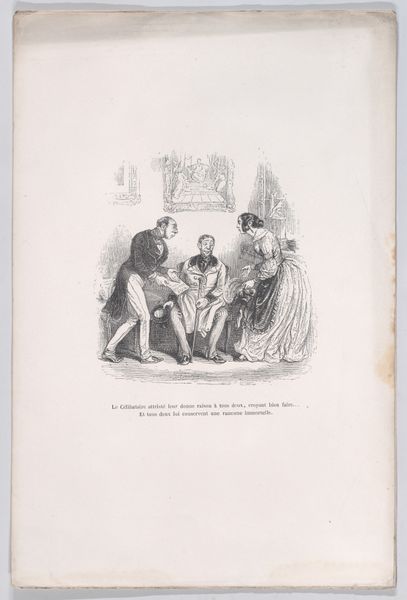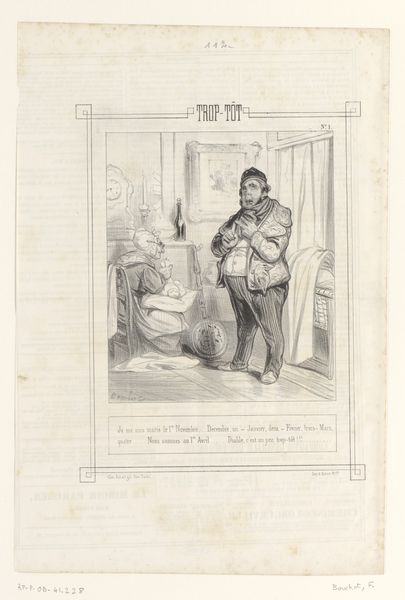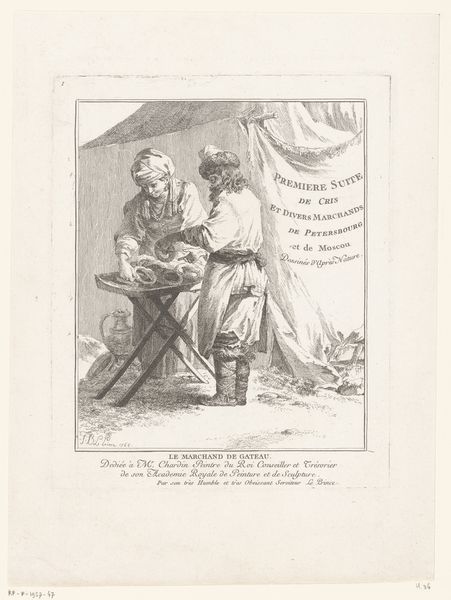
drawing, print, engraving
portrait
drawing
narrative-art
figuration
romanticism
line
genre-painting
engraving
Dimensions: height 267 mm, width 202 mm
Copyright: Rijks Museum: Open Domain
Editor: Here we have "Caricature of a Patron" by Hippolyte Bellangé, from 1829. It’s an engraving, so a print. The contrast between the two figures, one looking down on the other, makes me wonder about power dynamics in the 19th century. What strikes you most about this piece? Curator: As a materialist, I see the print medium itself as central. Engravings were often made for mass consumption. Think about the socio-economic context: who could afford to commission or buy such an image? The lines, etched meticulously, weren't just for aesthetic value; they were part of a commercial process. Who controlled the means of production? Editor: That’s interesting. I was focused on the implied narrative and class difference, but you're bringing it back to how it was made, reproduced, and distributed. How would this method have influenced its reception? Curator: Consider the division of labour involved. Was Bellangé himself the engraver, or did he outsource that part? How does that impact the value and perceived authenticity of the artwork? Also, the paper itself: its quality, source, and cost all speak to the artwork’s intended audience and circulation. Could it have been propaganda? Or merely, like some Romantic artworks, aimed to portray current affairs or manners of the age? Editor: So you're saying every aspect, from the paper to the engraving technique, is tied to social and economic factors of the time. I hadn't considered that the materials could be so informative! Curator: Exactly. The artwork becomes less about individual genius and more about the material conditions of its creation and consumption. Now, how might that understanding shift our interpretation of the scene depicted? Editor: Well, seeing it as a commodity changes things. The power imbalance isn't just a snapshot of society; it’s actively being circulated and consumed by it, maybe reinforcing those very inequalities. Curator: Precisely. A fascinating example of art entangled within the socio-economic fabric! Editor: This has really expanded how I view art history! Thanks!
Comments
No comments
Be the first to comment and join the conversation on the ultimate creative platform.
